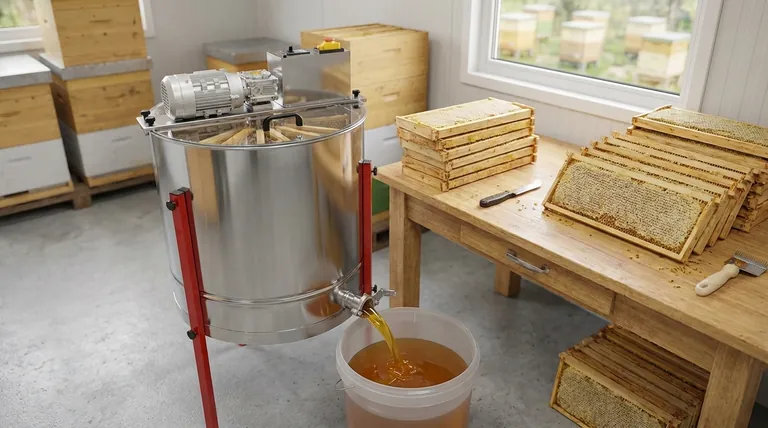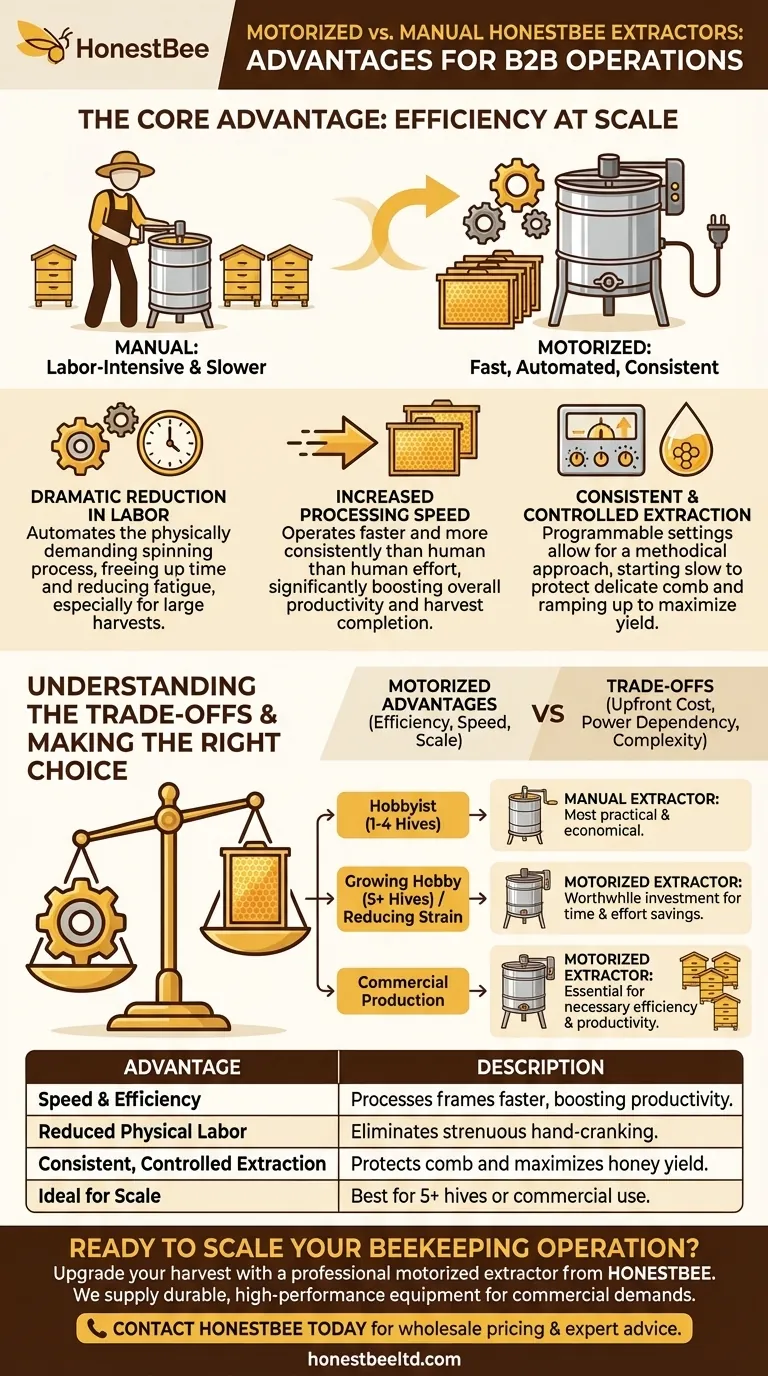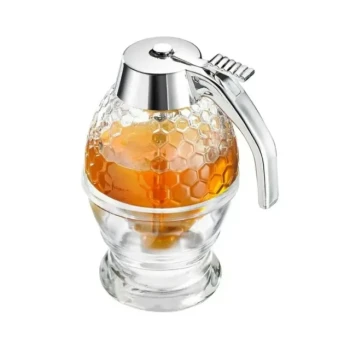When choosing a honey extractor, the primary advantages of a motorized model are its speed, efficiency, and the elimination of physical labor. Unlike manual extractors that require constant hand-cranking, motorized units use an electric motor to spin the frames. This automation dramatically reduces the time and effort needed for extraction, making it the superior choice for beekeepers with a large number of hives or those looking to increase their productivity.
The decision between a motorized and manual extractor is less about which is universally "better" and more about aligning the tool with the scale of your operation. The core advantage of going motorized is trading a higher initial cost for significant long-term savings in time and physical energy.

The Core Advantage: Efficiency at Scale
For any beekeeper managing more than a few hives, the extraction process can quickly become the most labor-intensive part of the season. A motorized extractor directly addresses this bottleneck.
Dramatic Reduction in Labor
A motorized extractor automates the most physically demanding part of the job: spinning the frames. This frees you from minutes of strenuous hand-cranking for each batch of frames.
This benefit is especially crucial for beekeepers with physical limitations or those processing large harvests where manual cranking would lead to fatigue and inefficiency.
Increased Processing Speed
By automating the spinning, a motorized unit operates faster and more consistently than a person can. You can load the frames, set the speed and time, and focus on other tasks like uncapping the next batch.
This ability to process more frames in less time is a direct boost to productivity, allowing you to complete your harvest much more quickly.
Consistent and Controlled Extraction
Modern motorized extractors offer excellent speed control, often with programmable settings. This allows for a methodical approach to extraction.
You can start at a low speed to spin out the initial honey without shattering delicate new comb, then automatically ramp up the speed to extract the maximum amount. This consistency protects your equipment and maximizes your yield.
Understanding the Trade-offs
While efficient, a motorized extractor is not the default choice for everyone. Understanding its downsides is key to making an objective decision.
The Upfront Cost
The most significant barrier to a motorized extractor is its price. They represent a much larger financial investment compared to their simpler manual counterparts.
For a new beekeeper with only one or two hives, this cost can be difficult to justify.
Power Dependency
Motorized extractors require a reliable source of electricity. This makes them impractical for use in remote apiaries, off-grid locations, or areas with unstable power.
In these scenarios, the simplicity of a manual extractor that works anywhere is a clear advantage.
Simplicity vs. Complexity
A manual extractor is a simple machine with few points of failure. It is easy to maintain and repair.
A motorized unit adds a motor, wiring, and a speed controller. While generally reliable, these components introduce more complexity and potential maintenance needs over the lifespan of the equipment.
Making the Right Choice for Your Apiary
Your decision should be guided by a realistic assessment of your budget, the number of hives you manage, and your long-term beekeeping goals.
- If your primary focus is cost-effectiveness for a few hives (1-4): A manual extractor is the most practical and economical choice for your needs.
- If your primary focus is growing your hobby (5+ hives) or reducing physical strain: A motorized extractor is a worthwhile investment that will save you significant time and effort.
- If your primary focus is commercial production: A motorized extractor is an essential piece of equipment for achieving the necessary efficiency and productivity.
Ultimately, investing in a motorized extractor is an investment in your own time and the scalability of your beekeeping operation.
Summary Table:
| Advantage | Description |
|---|---|
| Speed & Efficiency | Processes frames faster than manual cranking, boosting overall productivity. |
| Reduced Physical Labor | Automates the spinning process, eliminating strenuous hand-cranking. |
| Consistent, Controlled Extraction | Programmable speeds protect comb and maximize honey yield. |
| Ideal for Scale | Best suited for beekeepers with 5+ hives or commercial operations. |
Ready to Scale Your Beekeeping Operation?
Upgrade your harvest with a professional motorized extractor from HONESTBEE. We supply durable, high-performance beekeeping equipment designed for the demands of commercial apiaries and beekeeping equipment distributors.
Invest in efficiency and protect your most valuable resource: your time. Contact HONESTBEE today for wholesale pricing and expert advice on the right equipment for your business.
Visual Guide

Related Products
- Commercial Electric 12 Frame Honey Extractor Spinner Motorized Honey Extractor
- HONESTBEE 72 Frame Industrial Electric Honey Extractor for Beekeeping
- 40 Frame Commercial Electric Honey Extractor for Beekeeping
- 8-Frame Electric Self-Reversing Honey Extractor Spinner for Commercial Honey Extraction Equipment
- 6 Frame Manual Stainless Steel Honey Extractor Beekeeping Equipment
People Also Ask
- What are the advantages of using an electric honey extractor? Boost Your Harvest Efficiency & Yield
- What should be considered when choosing a honey extraction method? Maximize Hive Health & Harvest Efficiency
- What are the characteristics of motors used in honey extractors? Ensure Efficient, Damage-Free Honey Harvesting
- Which type of honey extractor is faster, electric or manual? Maximize Your Honey Harvest Efficiency
- Can a manual extractor be upgraded to an electric one? Save Labor & Boost Efficiency



















